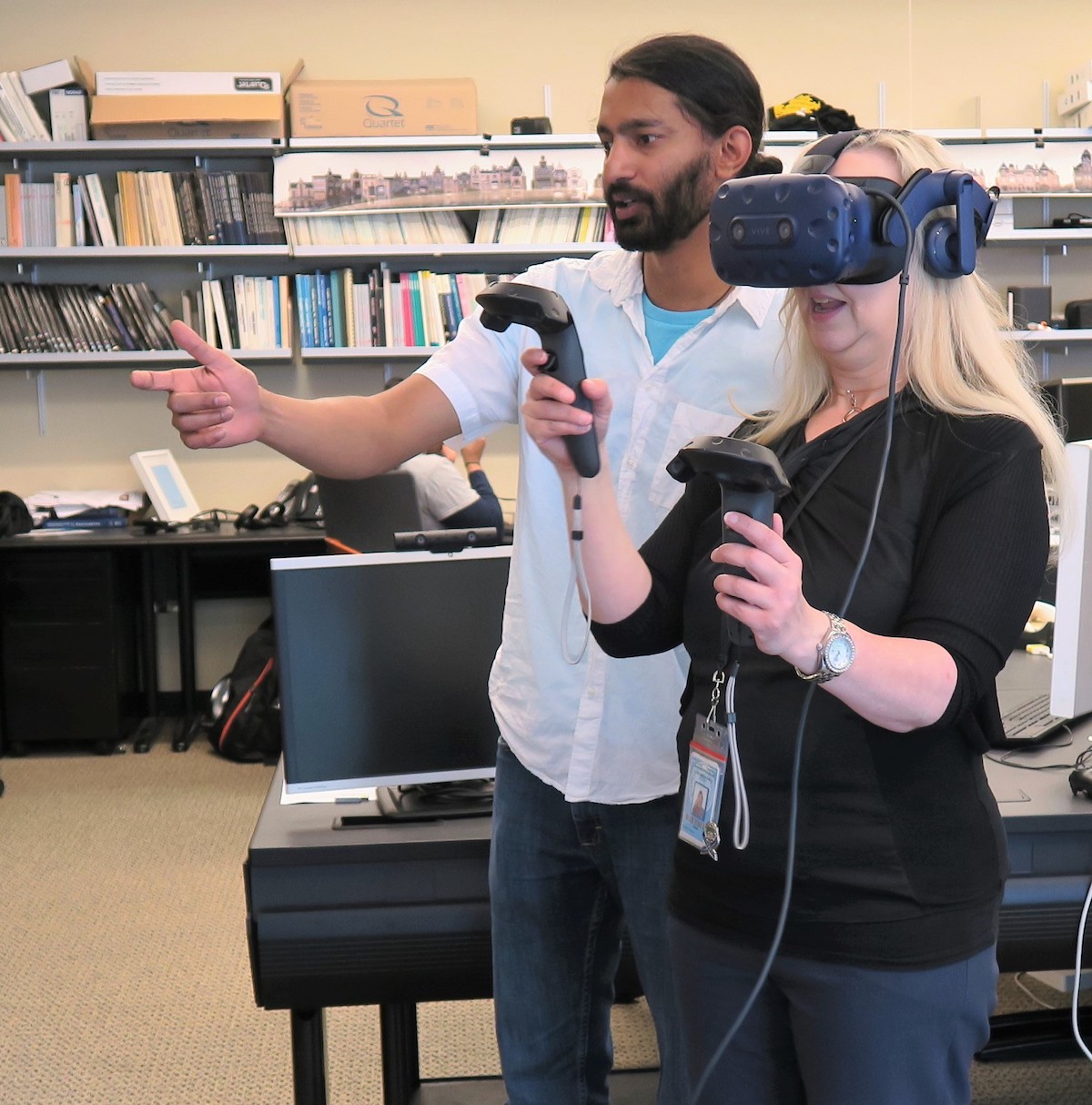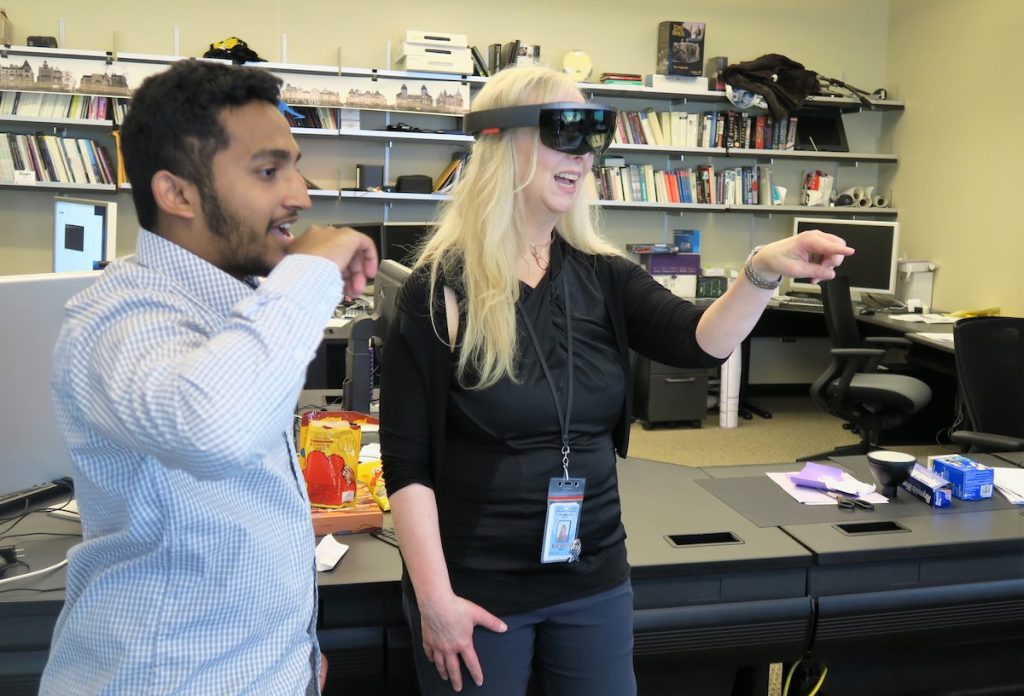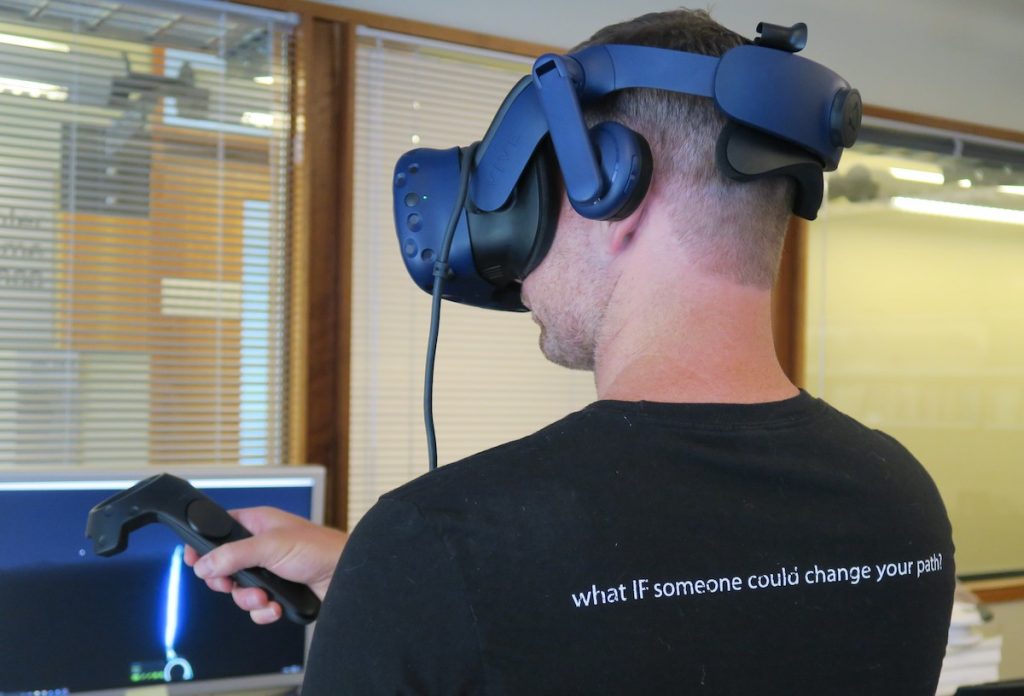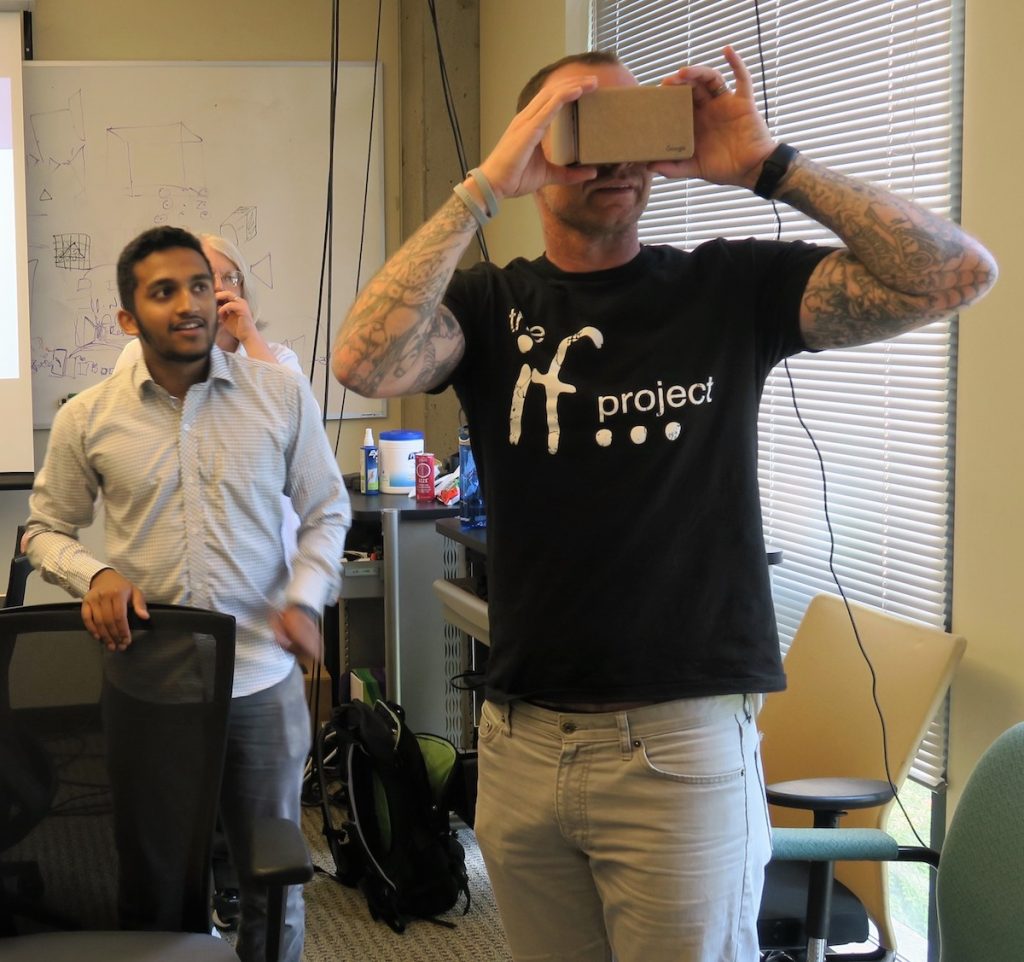University of Washington Instructor, Claudia Jensen contacted the UW Reality Lab to ask whether virtual reality could be useful inside a prison. For the past several years she has taught UW honors students about life and education in prison and about programs that help people successfully re-acclimate to life outside of prison once they are released.

The idea of using virtual and augmented reality to help prepare people for life outside of prison interested us – what sorts of experiences would help them and in what ways? What skills would they need to make their transition? Could this lower recidivism? Could it lower stress? Would the technology need to change to be used inside a prison? How would people who had been incarcerated for 10, 20, or 30 years react to virtual reality? We had many questions.
At Claudia’s invitation, we drove up to Monroe, WA to visit The Twin Rivers Unit where she takes her honors students to participate in a program called “Bridges to Hope” for several men incarcerated there. They were interested and energetic, so we started to plan.
We heard that multiple departments within the Department of Corrections (DOC) might be interested in AR/VR, so we thought a good way to start would be to give all sides a common vocabulary and knowledge-base in AR/VR. Doing that would make any conversations or proposals for using the technology clearer for all concerned. We recruited Anand Sekar, one of Claudia’s Honors students, to assemble an overview of current AR and VR technology and to look up examples of any prison programs using it. We would then present that information to both the incarcerated men who we met in Monroe, and to representatives from the Department of Corrections (DOC).
Members of the DOC Re-Entry Division and The IF Project visited the Reality Lab in July. They heard Anand’s presentation, used an HTC Vive, a Microsoft HoloLens, Google Cardboard, and sat down to discuss possibilities with our team. We hope this turns into an ongoing conversation within the DOC; time will tell.

Susan Piccinini uses a Microsoft HoloLens, assisted by Anad Sekar (photo by D. Kessler) 
Dolphy Jordan uses an HTC Vive (photo by D. Kessler)

